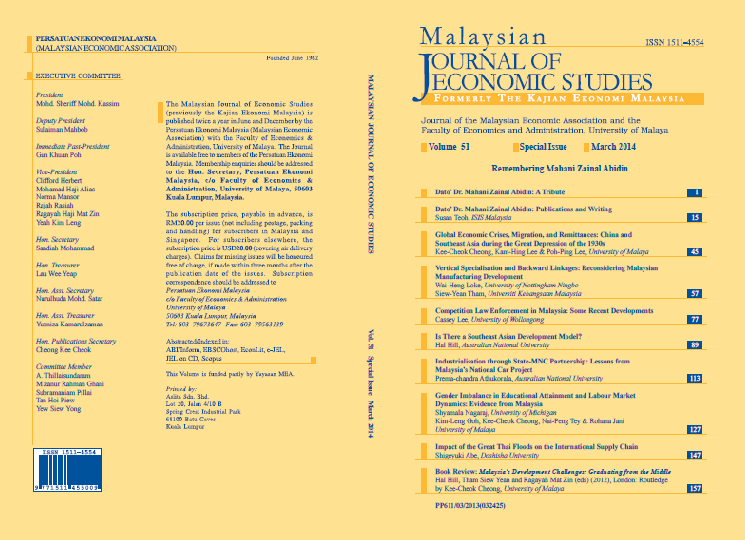Gender Imbalance in Educational Attainment and Labour Market Dynamics: Evidence from Malaysia
Keywords:
Gender imbalance, human capital, labour force, occupational structure, tertiary educationAbstract
The structure of the labour force in Malaysia has seen a major shift since the 1970s. Expanding economic opportunities have also increased demand for highly educated and skilled workers. The changing face of the Malaysian labour force has been brought about primarily by increased access to educational opportunities. Greater access to education has produced not only a surge in student enrolment but also dramatic improvements in higher education. Women have been major beneficiaries of these changes. This paper shows that gains in tertiary attainment have led to greater depth of human capital through bringing more people, especially females, into the workforce and prolonging their stay there. The positive effects are tempered by several concerns. The female advantage in terms of tertiary enrolment does not translate directly into their participation in the labour market. Female graduates are also more likely than male graduates to be in lower paying jobs or unemployed. Young persons without tertiary education face the prospect of unemployment and being crowded out of the job market by degree holders, many being female. Lagging educational attainment among males who dominate the workforce may also hinder a successful transition to a knowledge economy.

